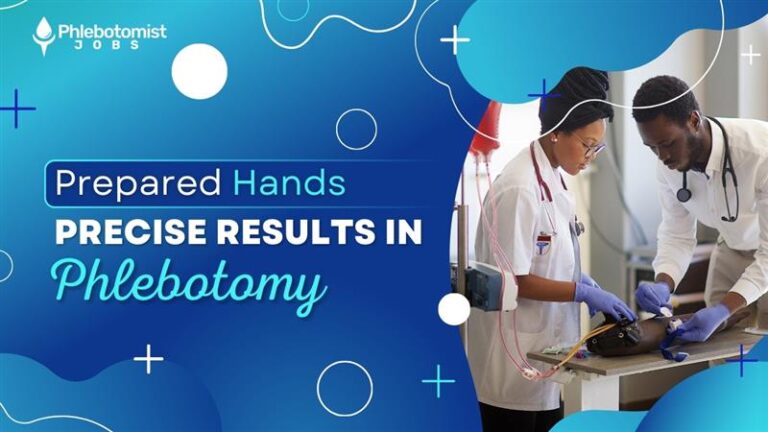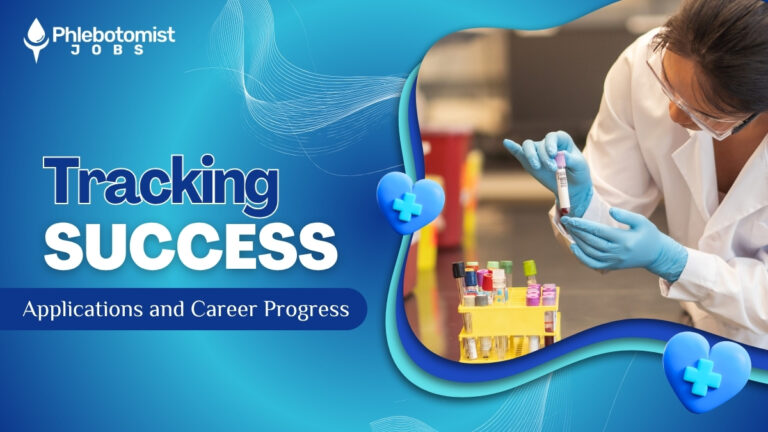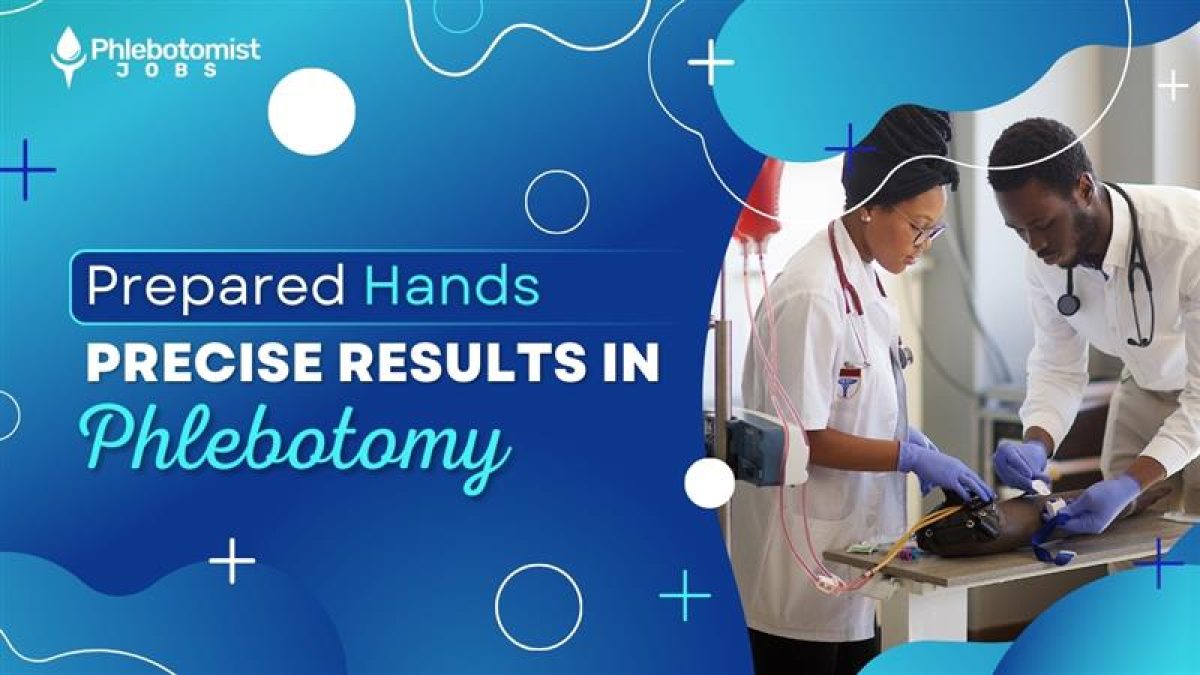Table of contents ▸
Phlebotomists play an important role in making sure healthcare is functional by drawing blood accurately to diagnose or treat patients. Even when being operationally efficient, mistakes occur that can jeopardize patient safety and ultimately the end result of their treatment. Despite being current, the common errors are still a great concern in phlebotomy in 2025, whereas the science of AI has already brought in a revolution in error prevention. In this blog, we talk about the seven most common phlebotomy errors professionals must not commit while also contrasting AI’s intervention into this field to the betterment of Phlebotomist Jobs, Phlebotomy Jobs, and Phlebotomist Opportunities for every Professional Phlebotomist.
The Biggest Mistake: Mislabeling Specimens
Simply put, a phlebotomist mislabeling a specimen is the most serious error they can commit. Incorrectly or inaccurately labeling specimens can lead to misdiagnosis, wrong medical treatment, and patient death due to delayed care. Cases of mislabeling are catastrophic since somebody may have switched patient labels or wrongly identified patients.
Why Mislabeling Happens?
Distractions, haste, or lack of training lead to mislabeling. In a busy environment, the Professional Phlebotomist may just forget to double-check the patient’s wristband or labels. Fatigue and excessive workload contribute especially in understaffed settings where Phlebotomy Jobs demand balancing many tasks.
How AI Prevents Mislabeling
AI-assisted systems have helped reduce this error by automating the validation and labeling of patients. The barcode scanner may interface with an AI solution that cross-references patient data against an electronic health record (EHR), thereby ensuring that samples are labeled correctly in real-time. Some hospitals currently employ AI-powered wristband scanners that issue a warning to the phlebotomists before collection if any discrepancy is noticed, thus making the phlebotomist’s job safer and easier.
Other Critical Phlebotomy Mistakes to Avoid

Other vital errors that commonly occur besides mislabeling can affect patient care and damage credibility. Here are 6 other Phlebotomist errors that every Professional Phlebotomist must stand to rectify if they intend to excel in Phlebotomy Opportunities.
Improper Patient Identification
Not confirming the identity of the patient before a blood draw is a reckless error. Without proper checks phlebotomists would end up collecting samples from the wrong individual, hence errors in diagnosis or treatment.
The AI Way to Prevention
AI-enhanced identification systems- facial recognition or biometric scanning- are being integrated into phlebotomy services. These tools realize instantaneous confirmation of identity of the patient, thus reducing errors and enhancing trust in phlebotomist services. In an instance, AI may flag mismatches between the patient’s Electronic Health Record and the data from wrist-bands prompting for re-verification.
Faulty Venipuncture Techniques
When venipuncture is wrongly performed, the patient undergoes pain and suffering, bruising, and sometimes nerve damage. Some frequently wrongful acts in phlebotomy include picking the wrong vein, exerting excess force, or compromising aseptic conditions, each penalizing the patient and depriving phlebotomy of opportunities.
Prevention by AI
Venipuncture machines guided by AI, like the vein finder, employ infrared technology for the best map of veins. Such devices help Professional Phlebotomists select optimal sites, thereby lowering complications and ensuring patient experience in Phlebotomy Jobs is smooth.
Improper Specimen Handling
In cases of specimen mishandling, such as improper storage or delayed transport, the integrity of samples will be compromised. For example, failing to refrigerate certain samples can alter test results, a mistake that reflects poorly on Phlebotomist Jobs and patient outcomes.
Prevention by AI
There are excellent specimen-tracking systems that monitor the working conditions of specimens, such as temperature and temperature boundaries as well as the duration of transit, and warn the phlebotomists when any concerns rise. These uphold the viability of samples and hence support Phlebotomy Jobs to gain professional trust.
Poor Infection Control
Neglecting infection control, such as by not using gloves or reusing equipment, presents a serious risk. These common phlebotomy errors can lead to infections, which consequently endanger the patients and violate healthcare norms.
Role of AI in Prevention
AI-enabled compliance tools monitor in real-time whether protocols are followed. For instance, smart cameras could immediately alert if hand hygiene or the donning of gloves has been skipped by a Professional Phlebotomist. Hence, this technology creates safety opportunities in phlebotomy and safeguards patients.
Ineffective Communication with Patients
Poor communication can raise anxiety or cause misunderstanding. Professional Phlebotomists should explain procedures and address concerns, particularly with pediatric and geriatric patients. This is another one among the common phlebotomy errors that deteriorate goodwill.
Role of AI in Prevention
AI chatbots and virtual assistants now guide patients through the blood draw, providing multilingual instructions and calming techniques while also relieving phlebotomists to the benefit of Phlebotomist Jobs and patient satisfaction in Phlebotomy Opportunities.
Poor Documentation
Objectively, incomplete documentation with respect to such collection times or improper identification-mismatching, may disrupt the laboratory workflow and delay results. This error affects the efficiency of Phlebotomy Jobs and negatively impacts diagnostic reliability.
The Role of AI in Prevention
The AI-enabled EHR system facilitated phlebotomy documentation by auto-filling entry fields through scanned data. Less human touch means prevention of errors through which Professional Phlebotomists maintain good records and subsequently good Phlebotomy Opportunities.
The Future of Phlebotomy with AI
Conversely, the integration of AI into a phlebotomist’s role is reshaping its precision and patient-centered activity, preventing common errors and improving outcome value in Phlebotomy Opportunities. The predictive nature of AI analytics analyzes high-risk conditions like peak workload, thereby assisting hospitals in staffing adequately and avoiding errors. Featuring AI training modules in phlebotomy job descriptions is also growing, with standards in the profession to help phlebotomists train in the use of advanced tools.
Challenges of AI Adoption
With limitless promises lie costs, maintenance, training, and proper integration with existing systems. Small clinics may face difficulty adopting these systems; the phlebotomy practice may need to be limited in certain regional areas. Nevertheless, as AI grows in popularity, its advantages will be placed in every phlebotomist job, making them safer as a whole.
Conclusion
Phlebotomists worldwide still face common errors like labeling samples incorrectly, improper techniques, and neglecting infection control as of 2025. Nevertheless, there is a revolution in Phlebotomy Jobs because AI has paved a path towards making things more accurate, safe, and patient-oriented. From automated labelers, dispensing systems for biological reagents, to vein-finding technology, AI-enabled tools help phlebotomists reduce errors and shine in their careers. Professional Phlebotomists willing to look into new Phlebotomy Opportunities and contribute to building a safer healthcare system should continue to stay informed and embrace these technologies. New trends will soon come in, and adaptability and lifelong learning will be at the core of attaining Phlebotomy Jobs.
Follow us on Social Media: LinkedIn | Facebook | Twitter | Instagram












